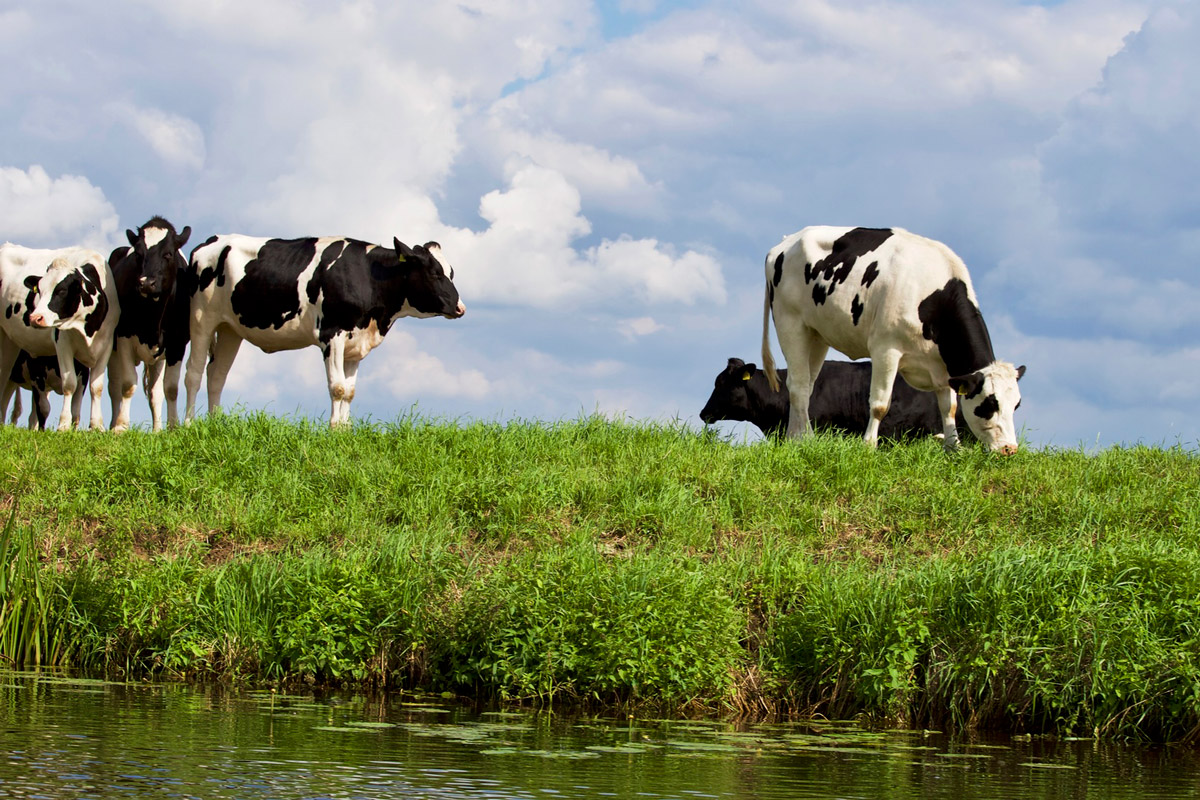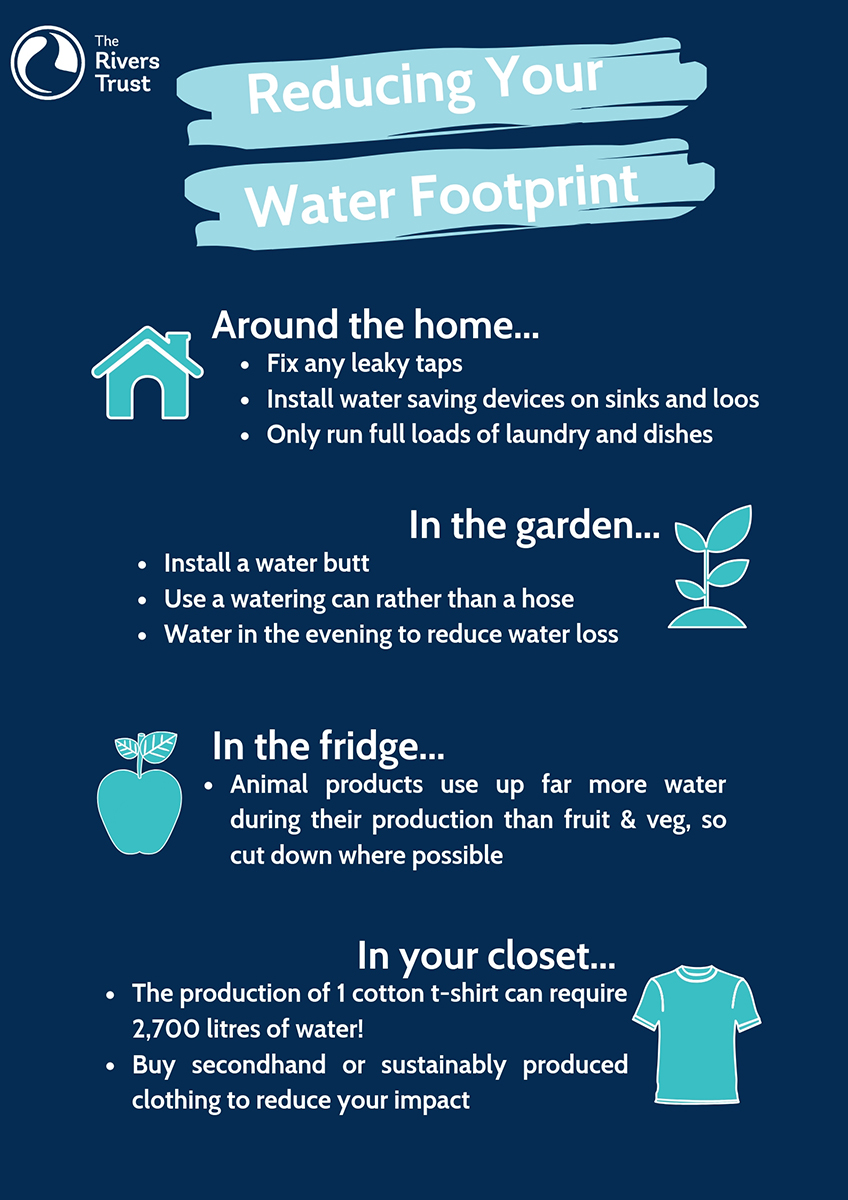Reducing Your Water Footprint
Emily Cooper
31/07/19
You've probably all heard of carbon footprints, and maybe even measured yours—but your water footprint is just as important!
 These cows won't be used to produce beef, but their milk still has a pretty considerable water footprint; one litre of milk requires 1050 litres of water!
Calculating a water footprint is always a complex process, but for humans this is doubly true. Our direct water use around the home is fairly easy to measure, but our indirect water use is so vast that it can be difficult to comprehend. We use so many services, buy so many different products, and use different amounts of water depending on individual behaviour. For us, you have to take into account...
These cows won't be used to produce beef, but their milk still has a pretty considerable water footprint; one litre of milk requires 1050 litres of water!
Calculating a water footprint is always a complex process, but for humans this is doubly true. Our direct water use around the home is fairly easy to measure, but our indirect water use is so vast that it can be difficult to comprehend. We use so many services, buy so many different products, and use different amounts of water depending on individual behaviour. For us, you have to take into account...



 This blog post has been supported by the WaterCo-Governance (WaterCoG) project under the Interreg North Sea Region VB Programme, funded by the European Regional Development Fund.
This blog post has been supported by the WaterCo-Governance (WaterCoG) project under the Interreg North Sea Region VB Programme, funded by the European Regional Development Fund.

What is a water footprint?
A water footprint adds up the total volume of water consumed by a particular entity within a given time period. This can be calculated for a product, service, industry, organisation, country, or even a person. It also includes both direct and indirect water consumption. So, in the case of a kilogram of beef, for example, the water footprint would include:- The water used to grow the roughage, grains and grass they eat
- The water used to clean the animals, the barn, and maintain the environment
- The water they drink during their lifetime
- The water needed to dilute pollutants arising from production
 These cows won't be used to produce beef, but their milk still has a pretty considerable water footprint; one litre of milk requires 1050 litres of water!
Calculating a water footprint is always a complex process, but for humans this is doubly true. Our direct water use around the home is fairly easy to measure, but our indirect water use is so vast that it can be difficult to comprehend. We use so many services, buy so many different products, and use different amounts of water depending on individual behaviour. For us, you have to take into account...
These cows won't be used to produce beef, but their milk still has a pretty considerable water footprint; one litre of milk requires 1050 litres of water!
Calculating a water footprint is always a complex process, but for humans this is doubly true. Our direct water use around the home is fairly easy to measure, but our indirect water use is so vast that it can be difficult to comprehend. We use so many services, buy so many different products, and use different amounts of water depending on individual behaviour. For us, you have to take into account...
- The water we use directly in our daily lives: showering, cleaning, cooking, gardening, etc.
- The water used to produce the food we eat
- The water used to produce the clothes we wear and the products we purchase
- The water consumed to provide us with services we use, e.g. electricity
How to reduce your water footprint

In your home...
- Shower rather than take a bath, and set a timer to keep your shower under 5 minutes
- Only run full loads of laundry and dishes
- Fix leaky taps to reduce water loss
- Use a watering can rather than hose to water your plants
- Install a water butt to catch rain water
- Recycle whenever possible

In your fridge...
- Animal products have a much higher footprint than fruit, vegetables, grains, etc. Cutting down your consumption of meat and other animal products like cheese is a great way to reduce your water footprint
- White meat has a much lower footprint than red meat, so ditch beef for chicken
- Only buy what you can eat: throwing perfectly good food away is a huge waste of water, so making a shopping list and stick to it

In your closet...
- Just one cotton t-shirt can require 2,700 litres of water! Fast fashion means that we are buying more clothes than ever before, and we need to nip this habit in the bud
- Buy second-hand or sustainably produced clothes in order to reduce your water footprint
What next?
We hope you'll use some of our tips to slim down your water footprint. If you want to spread the word about reducing your water footprint, feel free to save and share our infographic below. Just right click and choose "Save As". You can also donate or volunteer to help us protect and improve our rivers, buffering them against the impact of drought. This blog post has been supported by the WaterCo-Governance (WaterCoG) project under the Interreg North Sea Region VB Programme, funded by the European Regional Development Fund.
This blog post has been supported by the WaterCo-Governance (WaterCoG) project under the Interreg North Sea Region VB Programme, funded by the European Regional Development Fund.
